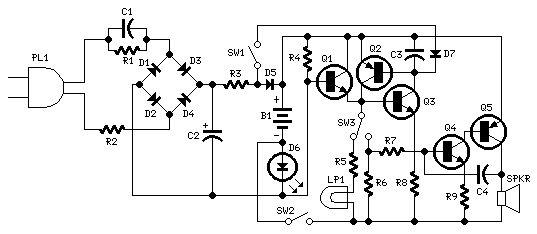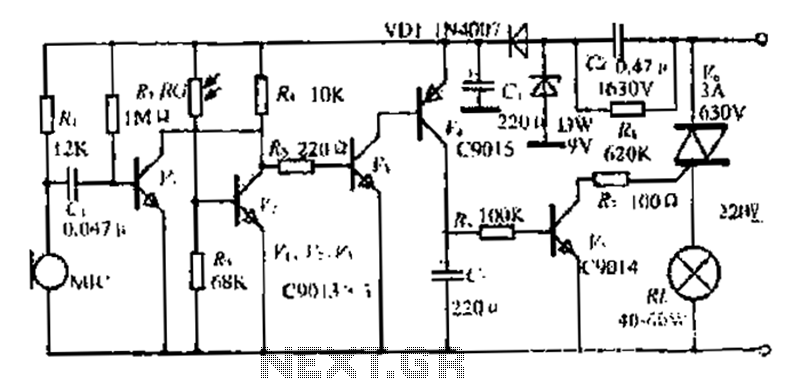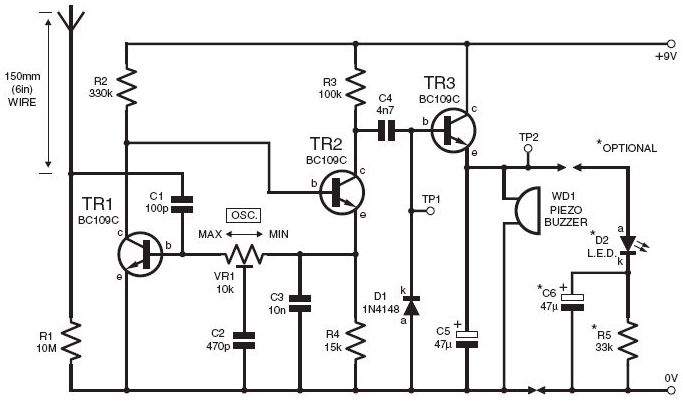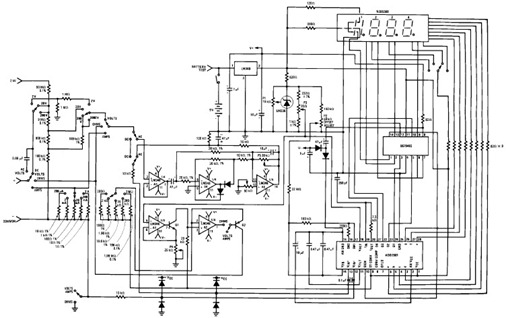
Light Pollution Meter
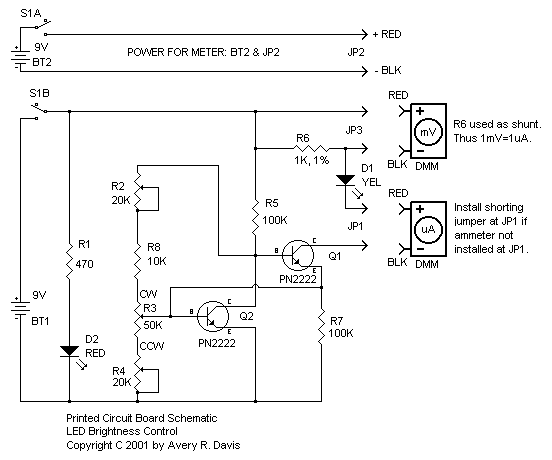
My circuit adds a transistor, to add feedback, and two resistors, to tailor the range of the control, with the result that a single-turn potentiometer gives a control range of about 2 to 30 microamps. I installed my circuit in a small plastic box, and mounted banana plugs on the bottom of the box spaced so that they would plug directly into the DMM. This combines the controller with the DMM, so there is one less thing to hold.
The described circuit utilizes a transistor to implement feedback control, enhancing the stability and accuracy of the output current. The inclusion of two resistors serves to set the gain of the transistor and define the operational range of the control system. By adjusting the values of these resistors, the circuit can be fine-tuned to achieve a desired output range, which in this case is specified as 2 to 30 microamps.
The single-turn potentiometer allows for precise adjustments within this range, enabling the user to easily set the output current as needed. This feature is particularly useful in applications requiring fine control over current levels, such as in calibration processes or sensitive measurements.
The entire assembly is housed within a compact plastic enclosure, which not only provides protection for the components but also enhances portability. The integration of banana plugs at the bottom of the box facilitates direct connection to a Digital Multimeter (DMM), eliminating the need for additional wiring or connectors. This design choice simplifies the user experience by reducing clutter and streamlining the measurement process.
Overall, this circuit design effectively combines functionality with convenience, making it a practical tool for electronic measurements and control applications.My circuit adds a transistor, to add feedback, and two resistors, to tailor the range of the control, with the result that a single-turn potentiometer gives a control range of about 2 to 30 microamps. I installed my circuit in a small plastic box, and mounted banana plugs on the bottom of the box spaced so that they would plug directly into the DMM.
This combines the controller with the DMM, so there is one less thing to hold. 🔗 External reference
The described circuit utilizes a transistor to implement feedback control, enhancing the stability and accuracy of the output current. The inclusion of two resistors serves to set the gain of the transistor and define the operational range of the control system. By adjusting the values of these resistors, the circuit can be fine-tuned to achieve a desired output range, which in this case is specified as 2 to 30 microamps.
The single-turn potentiometer allows for precise adjustments within this range, enabling the user to easily set the output current as needed. This feature is particularly useful in applications requiring fine control over current levels, such as in calibration processes or sensitive measurements.
The entire assembly is housed within a compact plastic enclosure, which not only provides protection for the components but also enhances portability. The integration of banana plugs at the bottom of the box facilitates direct connection to a Digital Multimeter (DMM), eliminating the need for additional wiring or connectors. This design choice simplifies the user experience by reducing clutter and streamlining the measurement process.
Overall, this circuit design effectively combines functionality with convenience, making it a practical tool for electronic measurements and control applications.My circuit adds a transistor, to add feedback, and two resistors, to tailor the range of the control, with the result that a single-turn potentiometer gives a control range of about 2 to 30 microamps. I installed my circuit in a small plastic box, and mounted banana plugs on the bottom of the box spaced so that they would plug directly into the DMM.
This combines the controller with the DMM, so there is one less thing to hold. 🔗 External reference
